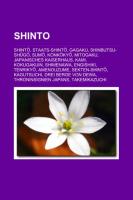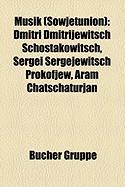Shinto
BücherAngebote / Angebote:
Quelle: Wikipedia. Seiten: 372. Nicht dargestellt. Kapitel: Shinto, Staats-Shinto, Gagaku, Shinbutsu-Shugo, Sumo, Konkokyo, Mitogaku, Japanisches Kaiserhaus, Kami, Kokugakuin, Shimenawa, Engishiki, Tenrikyo, Amenouzume, Sekten-Shinto, Kagutsuchi, Drei Berge Von Dewa, Throninsignien Japans, Takemikazuchi, Setsubun, Yoshida-Shinto, Miwa, Kushinadahime, Amaterasu, Nihonshoki, Yatagarasu, Kojiki, Yamatanoorochi, Konohanasakuyahime, Arai Hakuseki, Hachiman, Izanagi Und Izanami, Omoto, Jingu, Hayashi Razan, Sugawara No Michizane, Tsukuyomi, Drei Sumiyoshi-Kami, Kagura, Oyamatsumi, Amenooshihomimi, Mitama, Honen-Matsuri, Schrein-Shinto, Inari, Takamimusubi, Shinbutsu-Bunri, Arahitogami, Kagami-Mochi, Tenjin, Kume Kunitake, Dosojin, Motoori Norinaga, Omikuji, Shintai, Kogakkan-Universität, Iwakura Tomomi, Sperrstrauch, Miko, Shichi-Go-San, Rikkokushi, Hatsumode, Ujigami, Nomi-No-Sukune, O-Mamori, Takamanohara, Susanoo, Torii, Jindai Moji, Tensho Kotai Jingukyo, Ema, Junrei, Raijin, Norito, Jidai-Matsuri, Ashinazuchi Und Tenazuchi, Ebisu, Sengu, Ninigi, Yorozuhatahime, Kuraokami, Watatsumi, Hamaya, Yoshida Kanetomo, Misogi, Hatsumiyamairi, Kambe, Gohei, Hana-Matsuri, Kotodama, Kodama, Mikokami. Auszug: Shinto Shinto) or kami-no-michi is the indigenous spirituality of Japan and the Japanese people. It is best conceived of as a set of practices, carried out diligently to establish a connection between present day Japan and its ancient past. Shinto practices were first recorded and codified in the written historical records of the Kojiki and Nihon Shoki in the 7th and 8th century. Still, these earliest Japanese writings do not refer to a unified "Shinto religion", but rather to disorganized folklore, history, and mythology. Shinto today is a term that applies to public shrines suited to various purposes such as war memorials, harvest festivals, romance, and historical monuments, as well as various sectarian organizations. Practitioners express their diverse beliefs through a standard language and practice, adopting a similar style in dress and ritual, dating from around the time of the Nara and Heian Periods. The word Shinto ("Way of the Gods") was adopted from the written Chinese (¿¿), combining two kanji: "shin" ), meaning kami, and "to" ), or "do" meaning a philosophical path or study (originally from the Chinese word tao). Kami are defined in English as "spirits", "essences" or "deities", that are associated with many understood formats, in some cases being human-like, in others being animistic, and others being associated with more abstract "natural" forces in the world (mountains, rivers, lightning, wind, waves, trees, rocks). Kami and people are not separate, they exist within the same world and share its interrelated complexity. There are currently 119 million official practitioners of Shinto in Japan, although a person who practices any manner of Shinto rituals may be so counted. The vast majority of Japanese people who take part in Shinto rituals also practice Buddhist ancestor worship. However, unlike many monotheistic religious practices, Shinto and Buddhism typically do not require professing faith to be a believer or a practitioner, and as such it is di
Folgt in ca. 5 Arbeitstagen

